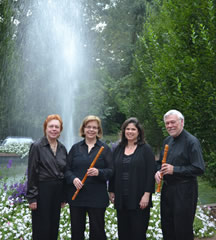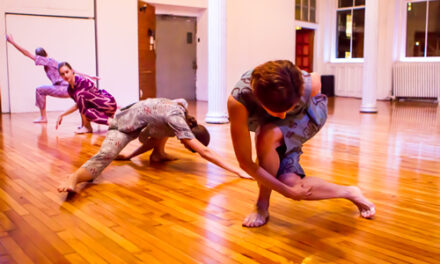I often think that we in the Triangle now must be the luckiest people on the East Coast, possibly even in the country, when it comes to the availability of great music and dance from around the world. It wasn’t always this way, and the remembrance of the scant offerings of decades past makes me incredulous to see empty seats at the amazing performances now presented locally, by university arts programs and other theaters. It just happened again. Two nights before the group was to take the big stage at Carnegie Hall, Duke Performances presented “The Devil’s Fiddler,” Hungary’s Roby Lakatos, and his ensemble, in Reynolds Theater. Gypsy! Jazz! Folk melodies! Liszt! Django music! — all seamlessly segueing into one stream of virtuosic playing and playful showmanship, for half the price or less — and a fraction of the aggravation — you’d pay in New York. There was a reasonable crowd, but the comfortably-sized theater was by no means full. Where were the fiddle festival fanatics? Even Duke can’t go on booking these artists if they can’t get an audience.
The wandering Gypsy may not any longer exist in the world as we know it, and we may never hear the sound of boot heels stamping the rhythm for fiddle and guitar around the camp fire, but the touring Gypsy is clearly alive and well. Roby Lakatos, from a family of legendary Gypsy fiddlers, has a rich, smooth tone and an almost unbelievable ability to go from zero to 60 in no time, and from warp speed down to lullaby nearly as fast. Speed is good and fine, but the sound was like wine, warming and intoxicating. Best, to my mind, is his no-boundaries approach to the music: Why choose? Feast on the best of everything. Lakatos also has a delightfully showy visual style, and I was nearly hypnotized by his appearance. He was a study in reflectivity, from his pointy patent leather toes, to his shiny jacket and lustrous shirt, to the diamond-paved belt buckle and pin at his throat. He wore no earring, but his right wrist gleamed with gold. His violin wore a single large ruby that flashed fire off the instrument’s glossy varnish. All this under a cloud of grey curls, an angelic smile, and a moustache waxed to tiny points.
Lakatos’ group consists of second violinist Lászlo Bóni, self-effacing but almost as virtuosic as Lakatos himself, with whom he has been playing since they were both boys, and four very young musicians of stunning talent on piano, guitar, bass and cimbalom. All the instruments were either miked or wired, and the sound balance among the instruments was not perfect, especially during the first set. It is very difficult to amplify multiple stringed instruments, and neither the bass nor the guitar seemed to get quite what they needed. This was particularly disappointing on their solos, which would have been outstanding if only they had been a little louder.
I had never actually seen a cimbalom before, and was rather awestruck by seeing it played by Jeno Lisztes. Now 23, he has been playing this instrument — basically a hammered dulcimer with grouped strings, up on legs in a finely carved cabinet — since he was four years old, and taking prizes since age twelve. The cimbalom makes a bridge between the piano and the plucked, strummed or bowed strings, and its sound ranges from a sweet and festive ringing to the most melancholy burr. It is played with little mallets that look like very long iced-tea spoons. Unlike the more delicate hammered dulcimer, the cimbalom fares well in the ensemble playing, but as a solo instrument, it was astonishing. In Lisztes’ hands the mallets blurred in the flurry of notes, yet each note was distinct.
Like Lisztes, the pianist Frantisek Janoska is still a student. One can always improve, but it was difficult to see what skills remained for either of these musicians to acquire. Janoska is a big man, on the same scale as the fine new Steinway grand Duke has been showcasing this season. When he was not playing, he sat very still, resting his left hand lightly on the piano, as if it were a potentially rambunctious and much loved dog of a very large breed. But when he played, his fingers blurred, like the cimbalom mallets, while they generated a cascade of precise sounds. During Janoska’s big, heart-racing solo, even the other musicians looked amazed.
As fine as Lakatos’ playing was, and that of all the musicians in their solos, the biggest thrills came at the transition moments when the group came together again. Perhaps the most wonderful was the instant a long cimbalom solo of a traditional tune was taken up by the whole ensemble, which instantly modulated it into some rollicking Django sounds. Each instrument rang out, and all the playing was as bright as a fire by the riverside.












